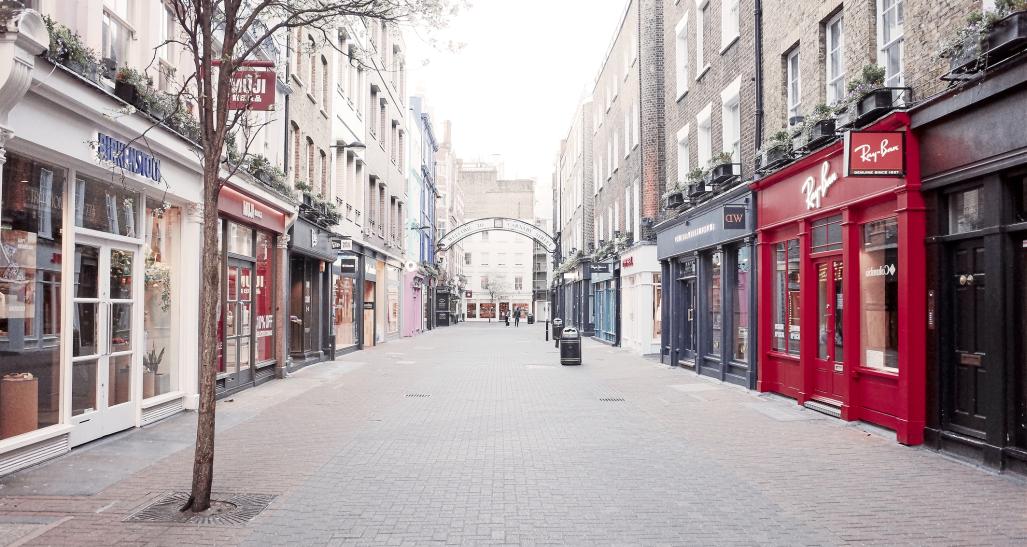
Neil Saunders is managing director and retail analyst for GlobalData, a market data and analytics firm. Saunders works with clients to help them understand the retail, shopper and market landscape — advising them on how best to develop, evolve and implement business strategies.
He previously worked for John Lewis Partnership where he was involved in the planning and relocation of new stores, development of ecommerce and creation of technical and informational systems. Saunders brings a global perspective to the impact of COVID-19 on retail.

What are some key differences in how the pandemic has affected retailers outside the United States?
No country has been immune from the impacts of the pandemic and retailers across the globe have been badly affected. Indeed, across 2020 we forecast that spending in the 50 largest retail markets will be around $528 billion lower than it was in 2019.
In terms of the deterioration, the worst-impacted countries will be the United Kingdom, France, Italy and Spain. In all these markets, the lockdown has been longer and stricter than it has in the U.S., and retailers are suffering the effects of having their physical stores closed for a protracted period. Because it was one of the first places affected by the virus and is further along the path to recovery, China will suffer a decline of only 0.4 percent in retail sales this year — a relatively good outcome, but one that is a long way below the country’s traditionally high single-digit growth rates.
Like the U.S., all countries have seen a spike in online sales and grocery retailers have outperformed as consumers started to stockpile. However, countries where consumers are very digitally enabled in terms of shopping — like China, South Korea and Singapore — have seen sales hold up better as retail brands quickly switched from physical to online engagement.
With Asia and Europe a bit ahead of the U.S. in reopening, what can retailers learn from watching other markets and how should they be prepared to respond?
The pattern of recovery has been different across various geographies. China has recovered quickly, buoyed by reasonably strong consumer sentiment and spending power and a strong multichannel offering. Europe is recovering much more slowly with sentiment and spending building gradually.
Chinese cosmetics retailer Lin Qingxuan deployed beauty advisors from its closed stores to become online influencers.
Out of the two groups, the U.S. is much more likely to follow the pattern of European countries as underlying consumer dynamics are similar. There are some common themes across recovering countries from which the U.S. can learn. Many retailers have been nimble in using social media to connect and sell to consumers, keeping them engaged as retail activity starts to build.
Chinese cosmetics retailer Lin Qingxuan deployed beauty advisors from its closed stores to become online influencers; these influencers leveraged social media platforms such as WeChat to actively engage with customers. Other retailers, such as China’s Meituan Dianping and JD.com, have focused on how to cope with a spike in online orders and deliver while protecting social distancing. Both are using autonomous vehicles to make deliveries. Meanwhile in France, Carrefour has found a new platform to help it fulfill deliveries during lockdown, as it entered a partnership with Uber Eats to bring essential grocery items to customers.
What global opportunities has the pandemic offered and what new obstacles have been introduced?
U.K. grocer Sainsbury’s SmartShop allows customers to scan products as they shop and pay instantly via dedicated checkouts.
Most of the obstacles in retail relate to the need to social distance. Physical retail is traditionally a very open business where consumers come and go as they please, but this model has now broken down. As such, retailers are looking for ways to limit traffic through appointment-based systems, restricting the number of people in stores and so forth.
This provides an opportunity to try and test new ways of selling. Suning, a popular retailer in China which sells electronics and home products, opened a store in April where products are showcased on a “virtual shelf” and customers can purchase through a smart screen.
There are opportunities to reimagine the store in other ways, too, such as pushing contactless payments and having more self-checkout options. U.K. grocery retailer Sainsbury’s has introduced a concept called SmartShop which allows customers to scan products as they shop and pay instantly via dedicated checkouts, eliminating the need for interaction with staff on registers.
Not only do these processes help maintain distance; they also increase efficiency and speed within stores, which helps improve productivity — something that is vital when the bottom line is under so much pressure. Most retailers will be reviewing what space they need going forward. In a lot of countries this could mean store closures. However, the space that is left will probably be invested in and ultimately provide a better experience for the consumer. In the end, retailers will respond imaginatively and creatively to this crisis and that will enhance retail for all of us.